Millipedes
- Article
- Millipedes
Millipedes
Scientific Name: Eurymerodesmus spp.
How to identify a Millipede
Millipedes, vary in size and colour (depending on species). The portuguese variety is black and up to 45 mm long. May vary in the number of body segments, but they always have 2 pairs of legs per segment (centipedes have one pair of legs per segment). Young millipedes look just like the adults (only smaller).
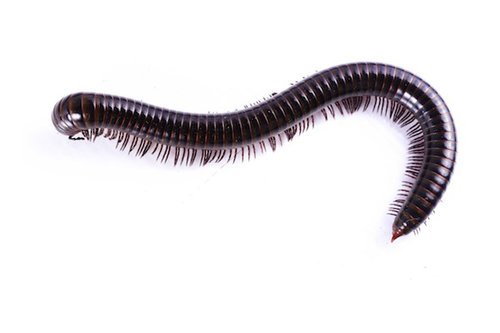
Where are Millipedes commonly found?
For many homeowners, the millipede may only be an occasional invader and are unlikely to experience an infestation. However, for homeowners in Victoria, South Australia and Tasmania, they can become victim to an invasion of portuguese millipedes as these can build up in huge numbers in garden beds.
Why are Millipedes considered a pest?
Millipedes generally live in gardens but are considered a pest when numbers buil up and they invade homes. Although they are generally harmless, they can release pungent excretions (to avoid being eaten by birds), which can stain skin and clothes and irritate eyes.
What is the biology and lifecycle of Millipedes?
They are not insects, although they are members of the Arthropod Phylum, which includes insects and spiders. A female millipede can lay up to 300 eggs in the soil, which hatch within a few weeks. Millipedes go through 7-8 life cycle stages from birth to adult. Millipedes mature within 2-5 years and live for several years after maturation.
Management Tips for Millipedes
Millipede Prevention:
-
Keeping the perimeter of the home clear of garden beds and mulch is the best preventative step. However, if this is not possible / desired, non-plant mulch (pebbles) should be used and watering should be kept to a minimum.
-
Potential entry points to the home should be sealed up appropriately and draft excluders / screens should be in good condition.
-
For areas prone to Portuguese millipede invasion, there are some additional tips
-
Turn off external lights and use curtains / blinds during the season to make your home less attractive
-
Consider using a light trap away from the house as an alternative light source to attract and kill them
-
Place smooth rounded physical barriers around the perimeter of the home at ground level to prevent them climbing into your home (they cannot climb smooth surfaces)
Millipede Control:
-
They are easily killed with a direct spray of insecticides either with an aerosol or ready to use pump pack.
-
How to get rid of millipedes is best achieved by carrying out a perimeter spray with an insecticides, focusing on good coverage at ground level and around potential entry points.
PRODUCT SOLUTIONS
-
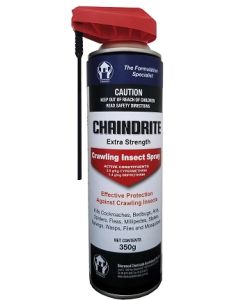 Chaindrite Extra Strength Crawling Insect Spray1.4g/kg Imiprothin and 2g/kg Cypermethrin
Chaindrite Extra Strength Crawling Insect Spray1.4g/kg Imiprothin and 2g/kg CypermethrinChaindrite Crawling Insect Spray is a new low odour oil-based professional aerosol insecticide with a powerful flush and kill effect on cockroaches. Chaindrite is an easy to apply aerosol “without the splutter”.This product is an excellent knockdown and flushing agent and has long term residual activity.
-
 Ensnare Pro 50SC Insecticide 1L50g/L Indoxacarb
Ensnare Pro 50SC Insecticide 1L50g/L IndoxacarbEnsnarePRO is a non-repellent residual suspension concentrate spray. It can be used in conjunction with baits without reducing the performance of the bait. Ants, cockroaches and flies don’t know it’s there. The ‘non-repellent’ properties of this formulation does not interfer with insects natural behaviour...
-
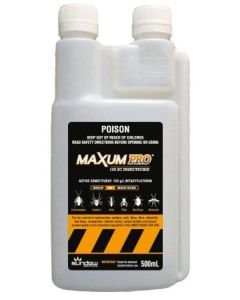 Maxum PRO 125 SC Insecticide 500mL125g/L Beta Cyfluthrin
Maxum PRO 125 SC Insecticide 500mL125g/L Beta CyfluthrinMaxumPRO is a robust, fast-acting, knock-down, broad spectrum insecticide for general insect control in domestic and commercial situations, as well as for the control of pest insects of turf and ornamental plants.
-
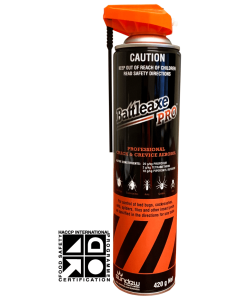 Battleaxe Pro Aerosol 420g20g/kg propoxur, 2g/kg tetramethrin, 10g/kg piperonyl butoxide
Battleaxe Pro Aerosol 420g20g/kg propoxur, 2g/kg tetramethrin, 10g/kg piperonyl butoxideBattleaxe PRO Professional Crack & Crevice is an aerosol formulation containing both long lasting and vapour-acting knockdown components.
-
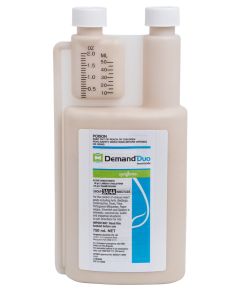 Demand Duo Insecticide 750mL38g/L Lambda-Cyhalothrin, 125g/L Thiamethoxam
Demand Duo Insecticide 750mL38g/L Lambda-Cyhalothrin, 125g/L ThiamethoxamDemand Duo Insecticide is a general pest spray that controls a wide range of pests, simply and effectively. The unique ZC formulation combines a suspension concentrate (SC) of Thiamethoxam and capsule suspension (CS) of Lambda-cyhalothrin. It is registered for the control of pests including ants, bedbugs, cockroaches, fleas, flies, portuguese millipedes, paper wasps, spiders and more.
Out of stock -
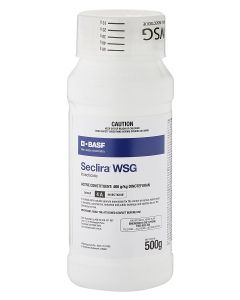 Seclira WSG Insecticide400g/kg Dinotefuran
Seclira WSG Insecticide400g/kg DinotefuranSeclira® WSG insecticide is a non-staining, odourless, broad spectrum, general insect control product for indoor and outdoor use.
-
 Termidor SC Residual Termiticide100g/L Fipronil
Termidor SC Residual Termiticide100g/L FipronilTermidor SC Residual Termiticide and Insecticide provides superior levels of control across subterranean termites, ants, cockroaches, spiders, and flies.
-
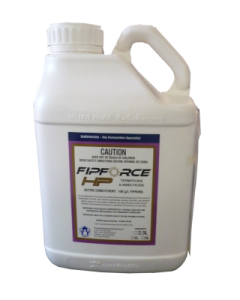 Fipforce HP Insecticide and Termiticide100g/L Fipronil
Fipforce HP Insecticide and Termiticide100g/L FipronilFipforce HP is an insecticide and termiticide in a SC (suspension concentrate) formulation that provides effective, odourless. long-lasting, non-repellent control of termites.
-
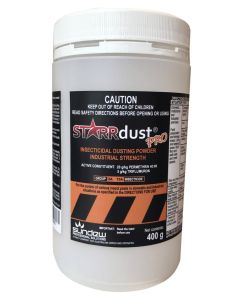 Starrdust PRO One-Shot Insecticidal Dust 400g20g/kg Permethrin, 5g/kg Triflumuron
Starrdust PRO One-Shot Insecticidal Dust 400g20g/kg Permethrin, 5g/kg TriflumuronThe Starrdust PRO One-Shot Insecticidal Dust 400g is an industrial-strength dust designed for use with the Starrdust PRO Duckbill Duster. It is a ready-to-use broad-spectrum insecticide with a unique formulation. It controls a wide range of insect pests including cockroaches, silverfish, spiders, ants, fleas, carpet beetles, bed bugs, European wasps, feral honey bees, bird mites, subterranean termites, hide beetles, millipedes, woodlice and clothes moths.
-
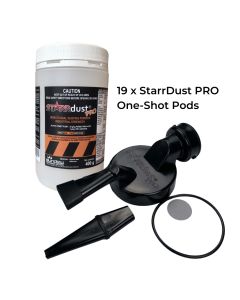 Starrdust PRO One-Shot Insecticidal Dust 19 x 400g + Duckbill20g/kg Permethrin, 5g/kg Triflumuron
Starrdust PRO One-Shot Insecticidal Dust 19 x 400g + Duckbill20g/kg Permethrin, 5g/kg TriflumuronA convenient kit of 19 x Starrdust PRO One-Shot Insecticidal Dust 400g Pods and a bonus Duckbill Duster. StarrDust PRO is an industrial-strength dust designed for use with the Starrdust PRO Duckbill Duster. It is a ready-to-use broad-spectrum insecticide with a unique formulation. It controls a wide range of insect pests including cockroaches, silverfish, spiders, ants, fleas, carpet beetles, bed bugs, European wasps, feral honey bees, bird mites, subterranean termites, hide beetles, millipedes, woodlice and clothes moths.
-
 Tempo Residual Insecticide 1L25 g/L betacyfluthrin
Tempo Residual Insecticide 1L25 g/L betacyfluthrinTempo Residual Insecticide is a fast-acting, knock-down, broad-spectrum insecticide for general insect control in domestic and commercial situations, as well as for the control of pest insects of turf and ornamental plants.
JOIN OUR NEWSLETTER NOW!
Be the first to hear about the latest specials, products, tips and ideas.

